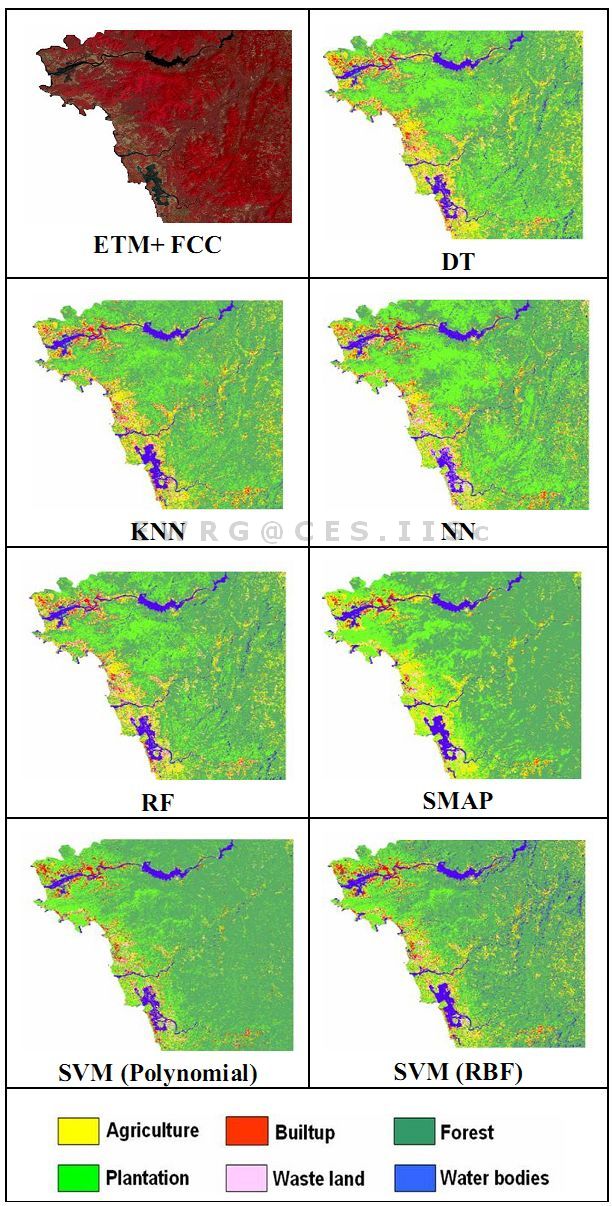Dr. T.V. Ramachandra
Centre for Sustainable Technologies,
Centre for
infrastructure, Sustainable Transportation and Urban Planning (C
iSTUP),
Energy & Wetlands Research Group, Centre for Ecological Sciences, Indian Institute of Science, Bangalore – 560 012, INDIA.
E-mail : cestvr@ces.iisc.ac.in
Tel: 91-080-22933099/23600985,
Fax: 91-080-23601428/23600085
Web: http://ces.iisc.ac.in/energy
Ramachandra T. V. obtained his Ph.D. from Indian Institute of Science (IISc), Bangalore. Currently he is the Co-ordinator of Energy & Wetlands Research Group at the Centre for Ecological Sciences (CES), Associate Faculty at Centre for Sustainable Technologies (CST) and Centre for infrstructure, Sustainable Transport and Urban Planning (CiSTUP) at IISc, Bangalore. His area of research includes remote sensing, digital image processing, urban sprawl: pattern recognition, modelling, energy systems, renewable systems, energy planning, energy conservation, environmental engineering education, etc. He is member of many national and internationally recognized professional bodies and is a recipient of the prestigious Satish Dhawan Young Engineer Award, 2007 of Karnataka State Government, India.
Uttam Kumar
Energy & Wetlands Research Group, Centre for Ecological Sciences,
Department of Management Studies and Centre for Sustainable Technologies,
Indian Institute of Science, Bangalore – 560012, India
E-mail:
uttam@ces.iisc.ac.in
Uttam Kumar has an Engineering Degree in Computer Science from VTU, Belgaum, India., Master’s Degree in Geoinformation Science from University of Twente, The Netherlands and a Ph.D. from the Indian Institute of Science, Bangalore. His areas of research are developing algorithms for multi-satellite sensor spatial temporal data analysis. His research interests are Pattern recognition, Remote sensing, Data mining and Image processing using Free and Open Source Software (FOSS).
Anindita Dasgupta
Energy & Wetlands Research Group, Centre for Ecological Sciences, Indian Institute of Science, Bangalore – 560012, India
E-mail:
anindita_dasgupta@ces.iisc.ac.in
Anindita Dasgupta is with the Centre for Ecological Sciences, Indian Institute of Science, Bangalore. She has a Master’s Degree in BioTechnology from Bangalore University, India. Her research interests include Remote Sensing, Image Processing, Geographical Information Systems, Spatial Data Analysis and Urban Sprawl.
Chiranjit Mukhopadhyay
Department of Management Studies, Indian Institute of Science, Bangalore – 560012, India
E-mail:
cm@mgmt.iisc.ac.in
Chiranjit Mukhopadhyay earned a Ph.D. in Statistics from University of Missouri, Columbia in 1992, after obtaining M-Stat and B-Stat from Indian Statistical Institute, Kolkata. Currently he is Associate Professor of Statistics in the Department of Management Studies, Indian Institute of Science, Bangalore. He has served in the faculty of several Universities around the globe like The Ohio State University, Case Western Reserve University, Bilkent University etc. His current research interests include Bayesian Statistics, Reliability Theory, Statistical Quality Control, Empirical Finance and Financial Econometrics.


